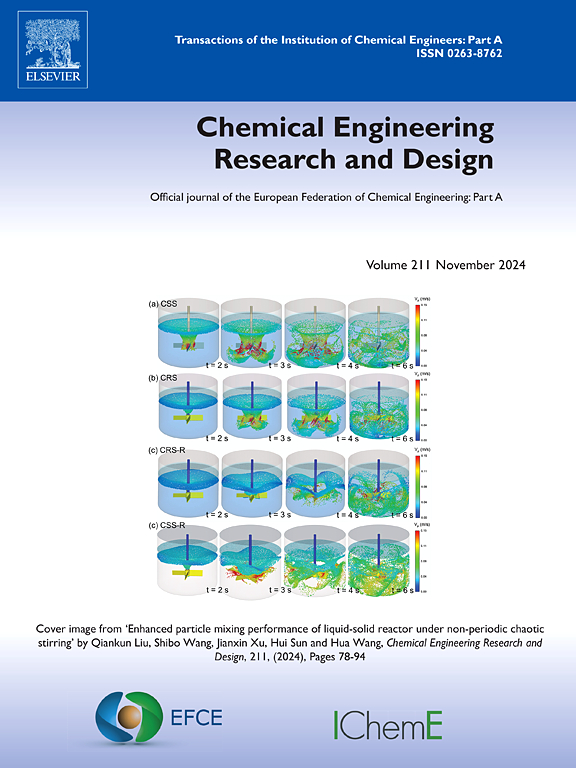集成PEM燃料电池单元的动态和全局优化:成本、效率和发电角度
IF 3.7
3区 工程技术
Q2 ENGINEERING, CHEMICAL
引用次数: 0
摘要
这项工作旨在探索一种最佳聚合物电解质膜(PEM)燃料电池的技术经济可行性,该电池集成了关键辅助部件,包括压缩机和供回歧管。为此,应用守恒原理建立了质子交换膜燃料电池第一性原理模型,并与电池电化学及辅助模块模型相结合。通过实验数据验证了动态理论框架,并将其扩展为嵌入田口法的非支配排序遗传算法II (NSGA-II),结合理想解相似偏好排序技术(TOPSIS)进行全局寻优。三个相互冲突的目标,即成本最小化、效率最大化和电池发电量最大化,被框定为四个设计和操作参数。PEM燃料电池在低热值条件下的平均输出功率为6909 W(57.81 %效率),高热值条件下的平均输出功率为6896 W(48.70 %效率)。在氢气购买价格为5美元/公斤时,电力生产成本保持在0.307美元/千瓦时,而氢气价格为4.55美元至4.62美元/公斤时,电力生产成本为0.30美元至0.31美元/千瓦时。本文章由计算机程序翻译,如有差异,请以英文原文为准。
Dynamics and global optimization of an integrated PEM fuel cell unit: Cost, efficiency and power generation perspective
This work aims at exploring the techno-economic feasibility of an optimal polymer electrolyte membrane (PEM) fuel cell integrated with key auxiliary components, including a compressor, and supply and return manifolds. For this, the first-principles PEM fuel cell model is developed by the application of conservation principle and then coupled with cell electrochemistry along with the model of auxiliary modules. Validating the dynamic theoretical framework with experimental data, it is extended to formulate the non-dominated sorting genetic algorithm II (NSGA-II) embedded with Taguchi method along with the technique for order of preference by similarity to ideal solution (TOPSIS) for global optimization. Three conflicting objectives, namely minimization of cost, and maximization of efficiency and power generation of the cell, are framed to identify the four design and operating parameters. The PEM fuel cell delivers an average output power of 6909 W (57.81 % efficiency) under lower heating value condition and 6896 W (48.70 % efficiency) under higher heating value condition. At a hydrogen purchase price of 5 $/kg, the power production cost remains consistent at 0.307 $/kWh, comparable to reported values of 0.30 – 0.31 $/kWh for a hydrogen price of 4.55 – 4.62 $/kg.
求助全文
通过发布文献求助,成功后即可免费获取论文全文。
去求助
来源期刊

Chemical Engineering Research & Design
工程技术-工程:化工
CiteScore
6.10
自引率
7.70%
发文量
623
审稿时长
42 days
期刊介绍:
ChERD aims to be the principal international journal for publication of high quality, original papers in chemical engineering.
Papers showing how research results can be used in chemical engineering design, and accounts of experimental or theoretical research work bringing new perspectives to established principles, highlighting unsolved problems or indicating directions for future research, are particularly welcome. Contributions that deal with new developments in plant or processes and that can be given quantitative expression are encouraged. The journal is especially interested in papers that extend the boundaries of traditional chemical engineering.
 求助内容:
求助内容: 应助结果提醒方式:
应助结果提醒方式:


